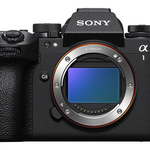Communication underwater during any dive is a critical component for diver safety and enjoyment. SSI have created a standardized set of hand signals which are used globally by all SSI divers to ensure a clear level of understanding and consistency.
All of the common rules about communicating underwater apply not only during recreational. Dives but maybe even more so during decompression dives. The dive buddies must regularly share their gas pressure, comfort level, navigation, and underwater positioning. In addition to this information, decompression diving requires divers to share critical information about ascents and descents, where to ascend, decompression status, decompression stop depth, and how long to remain at each decompression stop.
Decompression divers often use only one hand to communicate. This leaves their other hand free for a camera, ascent line, decompression platform, dive light, or diver propulsion vehicle. One-handed communication is more efficient, and can be as easy as communicating with two hands once the divers are familiar and experienced with one-handed signals.
Common one-handed signals are used to communicate:
Remaining cylinder pressures
Decompression depth and status
The gas switch procedure
Cylinder Pressures
“How Much Gas?”
To use one hand to request the amount of breathing gas another diver has available, the diver holds their hand horizontally with the palm facing up and the fingers extended. They then curl their fingers toward their wrist several times as if squeezing a sponge.
“Remaining Pressure”
The amount of pressure remaining in the cylinder is given as a number, with each numeral indicated in sequence. For example, if a diver had 150 bar remaining in their cylinder, they would indicate a “1”, then a “5”, and finally a “0”.
Communicating Decompression Depth and Status
“Level Up”
The buddy team must communicate when it is time to transition from the bottom stage to the ascent stage, and each time that a decompression stop is finished and they move to the next shallower stop. This is communicated using the “Level Up” hand signal.
“Remaining Decompression Time”
When the team arrives at the next decompression stop, they must verify the amount of time they will stay at that stop, since each diver’s dive computer may indicate a slightly different stop duration. This information is communicated with a sequence of signals to indicate the remaining time.
Sequence
Tap the dive computer with an index finger.
Make a fist with the little finger extended vertically.
Signal the time remaining with each numeral indicated in sequence.
“Decompression Complete”
Prior to ending the dive, each diver must have completed their decompression obligation. Once their dive computer indicates that they can make a direct ascent to the surface, the diver indicates the “Decompression Complete” signal to their buddy. They wipe their hand back and forth over the dive computer’s screen to indicated that their decompression obligation has been “wiped clean”. The buddy team should only ascend to the surface once both divers have given the signal.
Gas Switches
Switching between breathing gases is a controlled action that must be communicated between dive buddies so that one buddy can observe the other as they switch gases. To give the signal for “Gas Switch”, the diver conducting the switch forms a horizontal “V” with their index and middle fingers in front of their regulator. They then rotate their fingers one over the other a few times to indicate the switch.
Divers gain mastery of communicating with hand signals from the very outset of training so that the actions become ingrained habits and automatic responses. SSI divers can find these hand signals outlined in the MYSSI app.
The post Communicating with Hand Signals appeared first on Dive SSI.
Read MoreExtended Range, communication underwater, hand signalsDive SSI


